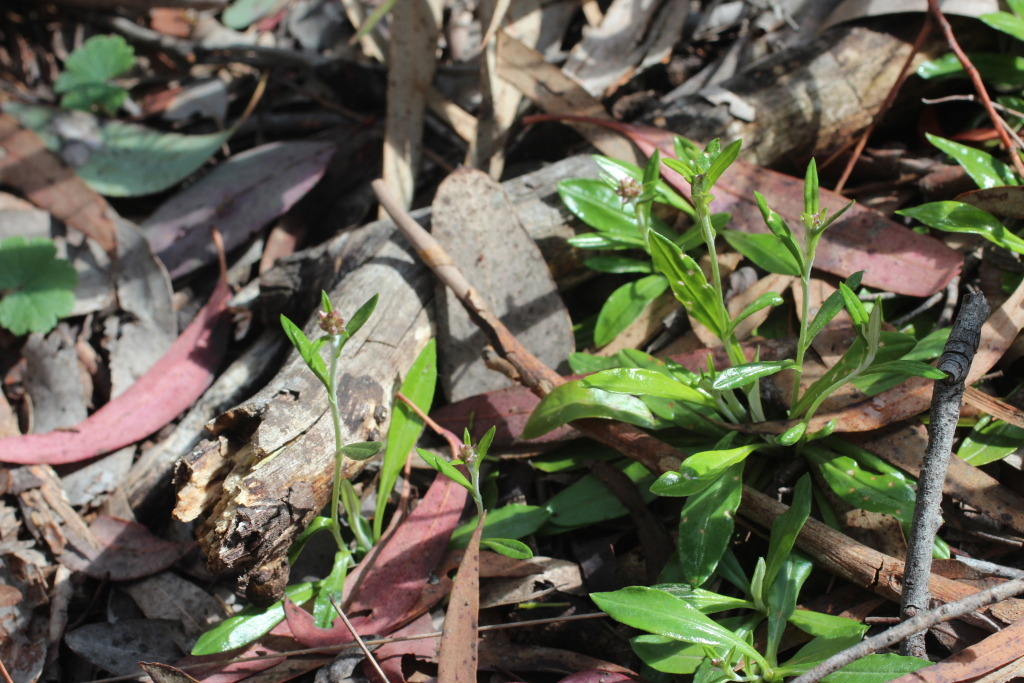Euchiton japonicus
(Thunb.) HolubStoloniferous perennial or biennial. Rosette leaves c. oblanceolate, (2–)4–20 cm long, (2–)4–10(–15) mm wide, upper surface green, glabrous, sparsely cobwebbed, rarely greyish and moderately cobwebbed, lower surface grey or whitish with dense appressed cottony and/or silky hairs. Flowering stems to 35 cm high, with c. 2–6 leaves. Inflorescence terminal (rarely 1–few axillary clusters below), 1–2 cm diam., subtended by 1–3 leaves, the longest c. 1–2 cm long. Capitula (5–)9–20(–35), more or less cylindric at anthesis; inner bracts c. oblong, 3.8–5 mm long, obtuse to rounded (rarely the very innermost 2- or 3-toothed), usually with a purple band just below the straw-coloured tip; bisexual florets (2–)3–7. Cypselas c. 0.6 mm long, sparsely puberulous with minute whitish hairs. Flowers mostly Sep.–Jan.
LoM, MuM, Wim, GleP, Brid, VVP, VRiv, MuF, GipP, OtP, WaP, Gold, CVU, GGr, DunT, NIS, EGL, EGU, WPro, HSF, HNF, OtR, Strz, MonT, HFE, VAlp. Common and widespread, particularly in cooler parts of the State, often colonizing bare ground, stream and track margins etc.
Small plants (to c. 10 cm high, with leaves to c. 4 cm long) approach the New Zealand species Euchiton ensifer (Drury) Anderb. and E. delicatus (Drury) Anderb., and have sometimes been referred to the former of these. At least in Victoria, these smaller specimens differ slightly from the New Zealand species in leaf shape and indumentum. Plants which retain a moderately dense cottony indumentum on the leaf upper-surfaces resemble E. audax (Drury) Anderb. (also of New Zealand), but there seems to be no disjunction between these and typical glabrescent E. japonicus. Both the small- and hairy-leaved variants seem to occur in more exposed situations than typical plants. Further research is warranted to determine whether these 'atypical' specimens may be referable to the New Zealand (or other) species, or form distinct, as yet undescribed, taxa.
Walsh, N.G. (1999). Euchiton. In: Walsh, N.G.; Entwisle, T.J., Flora of Victoria Vol. 4, Cornaceae to Asteraceae, pp. 820–825. Inkata Press, Melbourne.
 Spinning
Spinning


